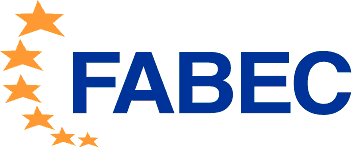Interoperability: New data exchange to facilitate inter-FAB free route

DFS and Austro Control implemented a new method to exchange flight data that increases the accuracy and timeliness of the data displayed on the radar screens in both the Karlsruhe and Vienna control centres. Data are no longer based on potentially outdated flight plan information. The new electronical data exchange, which is based on an OLDI specification (LATLON), will support the implementation of free route airspace.
Using the new method to coordinate data, both partners are now able to integrate the real-time planning horizons across ACC/UAC and FAB boundaries into their current operations. Previously, the trajectory data of each incoming flight had to be individually checked and manually updated as the data were mainly based on the flight plan. However, these data became less accurate as the flight progressed. Thanks to the new method, it is expected that numerous coordination activities per year will no longer be necessary. This reduces the workload of air traffic controllers, generates capacity and is a practical example of interoperability.
“This cooperation once again shows that substantial progress in the area of interoperability is possible – in a pragmatic way and across different systems,” says Robert Schickling, COO of DFS.
ATM systems have exchanged coordination data electronically for many years. In a conventional ATM environment, airspace design is based on a fixed route network and predefined coordination points (COP). In a free route environment, the number of route options is significantly higher, allowing customers to plan their flights using a variety of criteria (wind, fuel burn, etc.). By using the new method, the number and position of COPs between the sectors will no longer be relevant. The number of options will increase significantly.
To deal with this increase, a new method for the coordination of flight data regardless of COP (OLDI specification, LATLON format) has been implemented for the first time between DFS Karlsruhe UAC and Vienna ACC as of 9 June 2016. Further implementations allowing an exchange of updated trajectory information are scheduled for the upcoming months, aimed at the maximum use of this procedure with all neighbouring ACC/UAC and FABs.
Austro Control and DFS, as members of FABCE and FABEC respectively, are expecting significant benefits from this inter-FAB activity. Especially in view of the FABEC free route development and the SAXFRA (Slovenian/Austrian cross-border free route airspace) to be implemented in November 2016 under the FABCE umbrella. Each year, there are about 310,000 flights that cross the Austrian-German border, connecting two of the biggest functional airspace blocks.





.jpg)
.png)


Comments
There are no comments yet for this item
Join the discussion